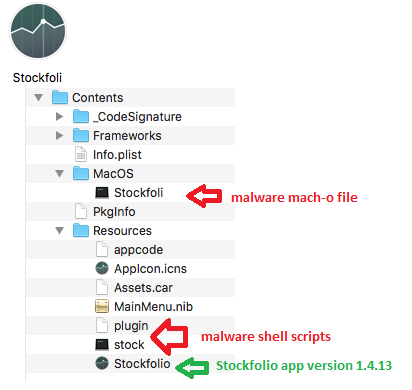
- App to scan for malware on mac software#
- App to scan for malware on mac mac#
While not strictly a review for malware, security matters are considered in the process. Similarly, all apps that wish to be sold on the Apple App Store must go through Apple’s App Review. Additionally, if a previously approved app is later to found to be malicious, Apple can revoke its Notarization and prevent it from running. That ticket is recognized in another part of the MacOS, Gatekeeper, which verifies the ticket and allows the app to launch. When this review turns up no instances of malware, Apple issues a Notarization ticket.
Notarization, Gatekeeper, and the App Review Process: Another way Apple keeps its users safe across MacOS and iOS devices is its Notarization Apps built to run on Apple devices go through an initial review before they can be distributed and sold outside of Apple’s App Store. According to Apple, MRT removes malware upon receiving updated information, and it continues to check for infections on restart and login. Similar to XProtect, it relies on a set of constantly updated definitions that help identify potential malware. 
 Malware Removal Tool: To further keep Apple users protected, the Malware Removal Tool (MRT) scans Macs to spot and catch any malware that may have slipped past XProtect. From there, suspicious files are quarantined by limiting their access to the Mac’s operating system and other key functions. Functionally, it works the same as any other antivirus, where it scans files and apps for malware by referencing a database of known threats that Apple maintains and updates regularly.
Malware Removal Tool: To further keep Apple users protected, the Malware Removal Tool (MRT) scans Macs to spot and catch any malware that may have slipped past XProtect. From there, suspicious files are quarantined by limiting their access to the Mac’s operating system and other key functions. Functionally, it works the same as any other antivirus, where it scans files and apps for malware by referencing a database of known threats that Apple maintains and updates regularly. App to scan for malware on mac software#
XProtect and Automatic Quarantine: XProtect is Apple’s proprietary antivirus software that’s been included on all Macs since 2009. Macs contain several built-in features that help protect them from viruses: In fact, if you see any configuration changes you didn’t personally make, this is another big clue that your computer may have been hacked. 
Malware can also be behind spammy pop-ups, changes to your home screen, or bookmarks to suspicious websites. Similarly, if you see spikes in your data usage, that could be a sign of a hack as well. A hacker may have hijacked your computer to send messages or to spread malware to your contacts. If you find apps you haven’t downloaded, along with messages and emails that you didn’t send, that’s a red flag. Aside from sapping performance, malware and mining apps can cause your computer to run hot or even overheat. Like the performance issues above, malware or mining apps running in the background can burn extra computing power (and data). Your computer feels like it’s running hot Is your device operating more slowly, are web pages and apps harder to load, or does your battery never seem to keep a charge? These are all signs that you could have malware running in the background, zapping your device’s resources.
App to scan for malware on mac mac#
Some possible signs of hacking software on your Mac include: Performance issues While cryptomining is not illegal, “ cryptojacking” a device without the owner’s consent is most certainly illegal. From there, it harnesses the device’s computing power to “mine” cryptocurrencies. Cryptominers: Similar to trojans, this software hides on a device.Trojans: Trojans are type of malware that can be disguised in your computer to extract important data, such as credit card account details or personal information.
 Keylogging: In the hands of a hacker, keylogging works like a stalker by snooping information as you type. Whether hackers physically sneak it onto your device or by tricking you into installing it via a phony app, a sketchy website, or a phishing attack, viruses and malware can create problems for you in a few ways: So what does Apple provide in terms of antivirus protection? Let’s take a look along with some signs that your Mac may be hacked and how you can protect yourself from further threats beyond viruses, like identity theft. While Apple does go to great lengths to keep all its devices safe, this doesn’t mean your Mac is immune to all computer viruses.
Keylogging: In the hands of a hacker, keylogging works like a stalker by snooping information as you type. Whether hackers physically sneak it onto your device or by tricking you into installing it via a phony app, a sketchy website, or a phishing attack, viruses and malware can create problems for you in a few ways: So what does Apple provide in terms of antivirus protection? Let’s take a look along with some signs that your Mac may be hacked and how you can protect yourself from further threats beyond viruses, like identity theft. While Apple does go to great lengths to keep all its devices safe, this doesn’t mean your Mac is immune to all computer viruses.








 0 kommentar(er)
0 kommentar(er)
